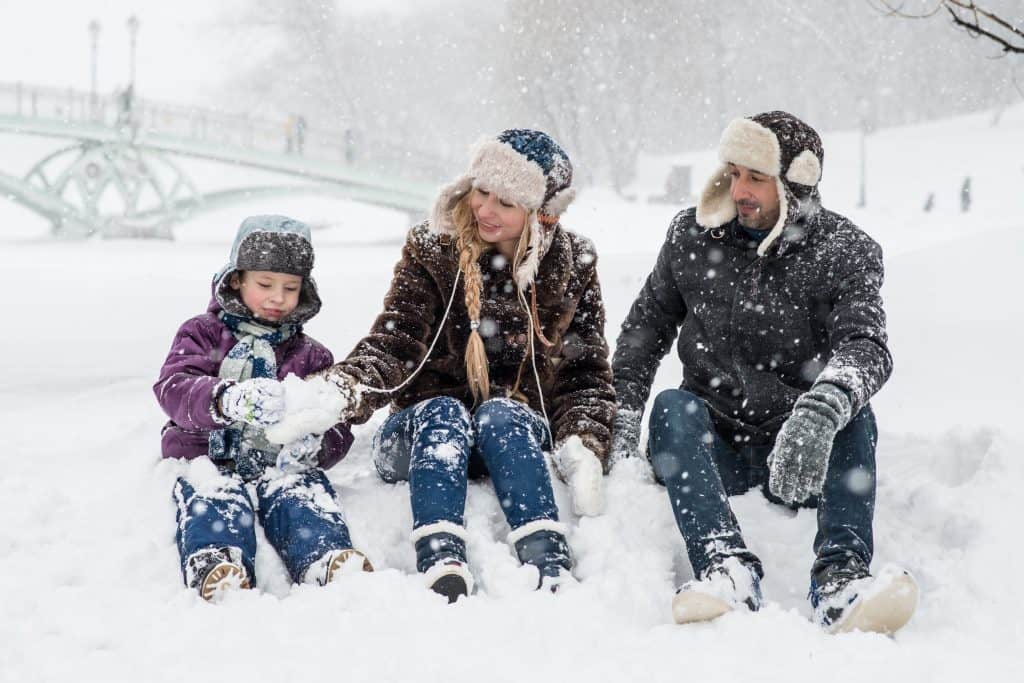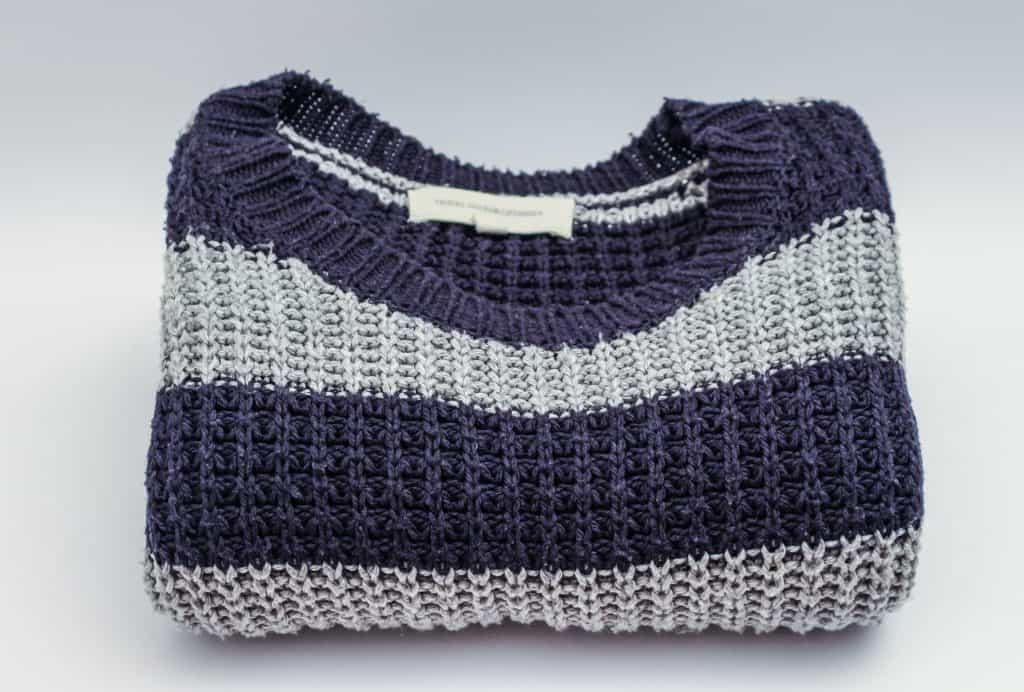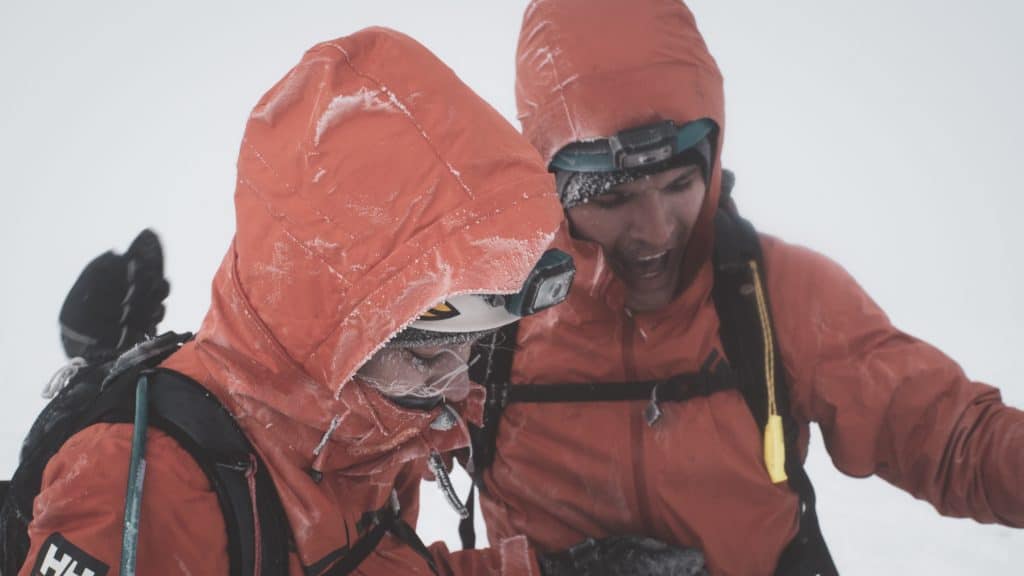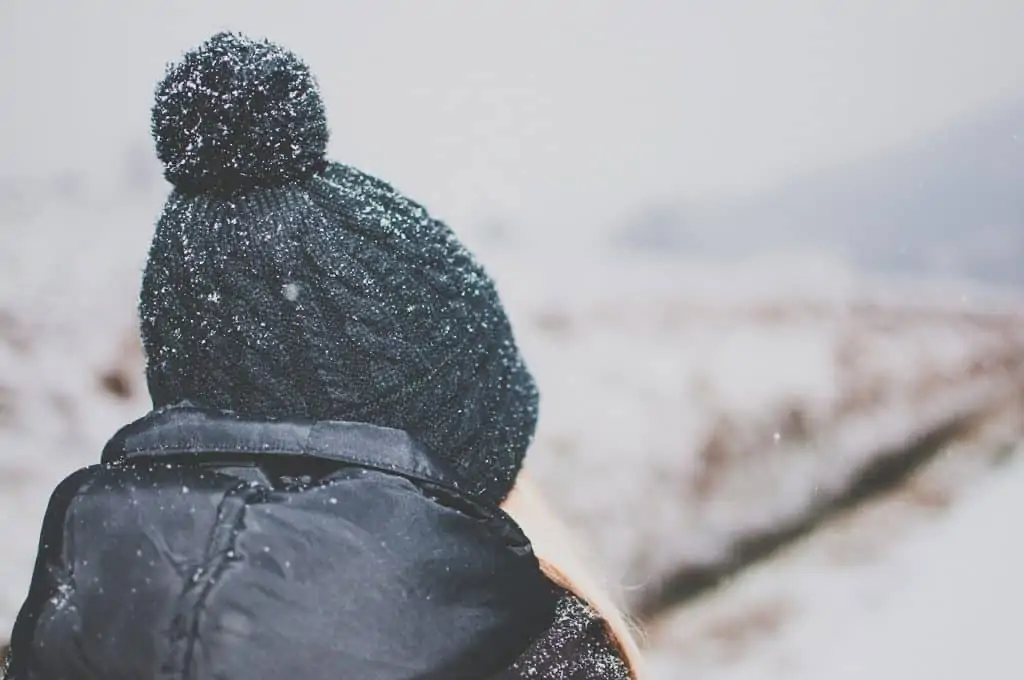Camping and hiking are clearly two of my favorite things to do (ever!). That being said, enjoying nature can get tricky during the colder months of the year.
Fortunately, there is a solution: layering.
Long before the advent of thermostats and portable heaters, people would stay warm outdoors just by layering their clothing.
Today, I’ll show you how to layer clothing the proper way. I’ll even go over some tips that can make it far more effective and easy to do.
Let’s get right into it!
Table of Contents
ToggleHow To Layer Clothes For Winter – A Layering Guide

In a nutshell, it all comes down to a layering system with three distinct sections – each with their own purpose.
The outermost layer is responsible for protecting you from wind, rain, snow, and other external elements. It’s also sometimes referred to as the shell layer for apparent reasons.
Under that, you have the middle layer or mid layer, which is responsible for keeping all your body heat in. Due to its job, the mid layer is sometimes referred to as the insulating layer. Retaining your body heat is crucial to maintaining a safe core temperature level in cold climates.
Lastly, there’s the base layer, sometimes called the underwear layer. Its main job is to absorb sweat from your skin.
I’ve seen some people only take one or two of the layers mentioned above rather than bringing all three along. Their logic is something along the lines of, “why would I bring extra layers that I won’t use?!”
The thing is, you can’t predict the weather with perfect accuracy. So, taking all three layers along is your safest bet. It’s better to have them and not need them than to need them and not have them.
Inner/Base Layer

I’ll start with the inner layer, otherwise referred to as the base layer. This layer consists of a shirt and leggings.
As mentioned above, it’s responsible for dealing with sweat that accumulates underneath your clothing. Seeing as that’s the case, you must use a material that’s both absorbent and breathable.
There are two paths that you can take when picking a material for your base layer: natural or synthetic. On the natural fiber side of things, there are fabrics such as silk, cotton, or merino wool available.
If you prefer synthetic fibers, then you’ll be choosing from nylon and polyester. Both are good picks, but polyester is one of the most popular fabrics used for base layer clothing. Below we’ll take a look at some of the benefits of synthetics and naturals so that you can pick the right material.
Synthetic Base Layers
The main benefit of taking the synthetic route is the fact that you’ll see the best performance in terms of drying. Nylon, polyester, and others in this group are effective at wicking sweat. This means you’ll get the driest experience when using synthetics.
Synthetic fabric is also far more durable than natural. If you anticipate heavy usage and want longevity in your wardrobe, then you might prefer polyester over cotton.
Some garments made of synthetic material even have an anti-bacterial finish that slows the development of bad odors. This is an excellent feature for thru-hikers who’ll be wearing these garments for weeks at a time.
Natural Base Layers
With synthetic’s superior drying, you might be wondering why anyone would choose natural fabrics. Well, there are actually some benefits to it. First, however, let’s go over some of the cons.
Merino wool does struggle with moisture retention. It’s not an issue to the extent of chilling you with stored sweat, but you won’t get the same dry feeling that you experience with synthetics. However, that moisture retention can come in handy during summer when you need cooling.
A key benefit of wool is that it’s naturally resistant to odor-causing bacteria. This means you can go a few days between washes and not have to worry about your clothes stinking. That’s quite impressive, considering no additional finishes are added.
As far as durability goes, you can’t expect it to be on the same level as synthetic. Some people use wool-synthetic blends so that they get the best of both worlds. Silk, while very light, struggles in the department of durability. And cotton, although affordable, won’t last as long as polyesters.
Naturals will also rack up odor faster since they’re not naturally resistant to bacteria.
If you’re dead set on natural, then try to find cloth with a sweat-wicking finish. It still won’t perform at the same level as synthetics, but it can help bridge the gap.
Mid Layer

Next up, you need to make some decisions for the middle layer of your warmth trifecta. This might be a wool sweater or a cardigan, or both.
If you were paying attention earlier, then you’ll remember that this layer is responsible for insulation.
Middle layers are the same as base layers in the sense that you have a wide range of options to choose from in both the natural and synthetic departments. The general rule of thumb is that you should pick thicker garments for this layer as they will be better at insulating.
However, insulation efficiency is vital in addition to the actual thickness of the fabric.
Let’s get to the pros and cons of each middle layer style.
Polyester Fleece
Polyester fleece is a popular option since it’s super breathable. It can also keep you warm even while it’s damp and dries at a rather fast rate – making it ideal for rainy conditions.
The breathability is a tradeoff, though. Although it’s comfortable, it can let the wind get in and leech your warmth away.
Fleece comes in three weights: 100, 200, and 300. The higher the number, the thicker and warmer the jacket will be. Choose the right weight based on your climate.
Another option for this layer is a wind fleece. Wind fleeces are popular since they combine wind resistance and warmth into one layer.
Strengths
- Breathable
- Warm when damp
- Dries fast
- Good for rain
Weaknesses
- Vulnerable to wind
Down Insulated Jackets
The most significant benefit of down jackets is that they’re very compressible and a piece of cake to store when not in use. They also have the highest warmth-to-weight ratio of any other material, making it an ideal pick for the insulating layer of your loadout.
Down jackets are always enclosed by an outer shell material, which means that they’ll also have some wind resistance.
No material is perfect, though, and the kryptonite of down jackets is rain. When a down jacket is damp, it loses its insulation efficiency.
On top of that, authentic down jackets tend to be pricey (but well worth it, in my opinion).
Strengths
- Compressible for storage
- Efficient insulation
- Wind-resistance due to shell
Weaknesses
- Unfit for wet conditions
Synthetic Insulated Jackets
For ages, synthetic insulated jackets have tried to catch up to the warming strength of down jackets. Over time, they’ve managed to tread closer but have never quite matched or surpassed down.
However, synthetic jackets tend to be much more affordable than down.
There is a significant drawback to using synthetics since they don’t compress as well and are thus harder to store. This isn’t a big deal to me unless you’re low on space in your backpack of choice. While storage can be an issue, I think it’s worth it since synthetic jackets work great under wet conditions (unlike down).
Much like down jackets, they also have an outer shell that will protect you from the cold breeze and rainfall.
Strengths
- Efficient even when damp
- Wind and rain resistance due to shell
- Lower price
Weaknesses
- Not as good at warming
- Harder to store
Shell/Outer Layer

Finally, the outer layer. This layer of clothing tends to take the most wear and tear since it’s exposed to all the elements. In addition to precipitation, shell layers should also protect you against sharp branches and jagged rocks. You’ll be attacked by all kinds of nature while exploring, and you want your shell to hold up well.
There are multiple categories of shells that you can choose from, and now I’ll go over each one.
Waterproof + Breathable
These are the crème de la crème of outer layers. If you’re looking for top-shelf functionality, then this is the category for you. Of course, high-end performance comes a premium price tag, so these shells won’t be suitable for everyone’s budget.
Waterproof and breathable shells will not only resist all water, but they’ll also keep you nice and fresh.
While you might spend a significant chunk of change on these shells, you’ll find that the dryness and durability are well worth it in the end.
Best for: outdoors professionals who want the best performance.
Water-Resistant + Breathable
If you’re only anticipating light rainfall, then you don’t really need to spend much on waterproof shells. Water-resistant options should be more than enough, without breaking the bank. This kind is often made out of polyester or woven nylon, making them reliable against rain and wind.
This is a popular choice among beginner campers since they offer durable rain protection without costing an arm and a leg.
Best for: intermediate hikers who want robust water protection without investing a ton of money.
Soft Shells
These types of shells prioritize breathability above all else. You’ll find that most incorporate fabric panels to make aerobic activities more comfortable. These shells have minor protection from wind and rain, and also feature light insulation.
These are ideal if you’re gonna be camping under calm conditions but want a shell just in case good weather takes a slight detour.
Best for: moderate weather campers who want some insurance against cold weather.
Waterproof + Non-Breathable
Also known as a bare-bones rain jacket, this is the most affordable outer layer around. These are useful all-purpose shells that can be used for any activity.
This category is pretty stripped down, but can still be useful in certain situations. They’re ideal for rainy days when physical activity will be kept to a minimum. This could include hobbies like bird-watching, fishing, and the like.
They aren’t suited to hiking or other high-exertion tasks since, due to the coated nylon construction, they don’t breathe from the inside. This means you’ll find yourself swimming in a pool of sweat in no time.
I recommend these to be carried in your bag in case of rain. If you plan on wearing it throughout your excursion, you should probably use one of the more premium options above.
Best for: regular outdoorsmen who want insurance against rain.
Waterproof Pants
So far we’ve mostly talked about layering shirts, fleece, and jackets. But lets not forget pants!
A great pair of snow pants will keep you warm with simply the pants layer and the base layer.
Of course you can wear your long underwear with jeans or other more casual pants, but if you are going for a snow play day, a snow hike, skiing, or more time outdoors, you’ll want waterproof ski/snow pants.
These pants will typically have a waterproof and windproof fabric that forces moisture to bead up on the surface rather than penetrating it. They’ll usually come with adjustable waist tabs and belt loops, zipper pockets, and sometimes venting.
Cold Weather Accessories Necessities

No matter what the weather, you should never, ever, ever, leave home in cold weather without proper hand, foot, and head protection.
For this you’ll need a great hat to keep you warm, gloves that can withstand not only the temperature, but other harsh weather conditions if you’ll run into them like rain and snow, and of course excellent socks!
Hats & Beanies
Your body heat can also escape through extremities, which is why it’s essential to wear a warm hat when you camp in cold temperatures. The classic beanie of course works best. Now a days, you can find a beanie in whatever color, pattern, or design you can imagine.
Balaclava Caps, Trapper Hats, and other Winter Caps can give you some style if you are looking for it too.
Just make sure that you have a hat that keeps you warm. You’ll find you especially want to wear it while winter camping to keep you safe and warm.
Gloves & Mittens
Once you’ve found your warm hat, now you need a pair of warm gloves. This pair of gloves should have a tight fit so that you can accomplish critical tasks (like tying knots) without taking them off.
You don’t want to have to take your gloves off and expose your hands to freezing temperatures just to get something done. So, pick a pair that’ll give you dexterity without sacrificing warmth.
There are various types of gloves, those with insulated layers for super cold conditions. Depending on the conditions, you will also need heavier waterproof gloves to ensure that your fingers are left soggy and cold.
Socks
If your feet aren’t warm, then you are destined to be cold, no matter what.
Keeping your feet warm is key, and that is why you want to have a good pair of winter socks.
Wool socks or thick synthetic insulated heavyweight socks are a must, and you’ll want to make sure that you have a backup especially if you are planning on encountering inclement weather.
Boots
While we’re talking about extremities, make sure you have the right footwear for the job. Boots come in various levels of insulation, and you’ll want to bring a pair that matches your climate.
Ultimately, what matters most in the winter, is waterproof boots. Expect bad weather. Expect snow and water. Bring boots that are up to task, especially if you are expecting snow.
Tips & Tricks: Layering and Cold-Weather Camping
Alright, at this point, you know what kind of layers are out there. Now, it’s time to go over how to properly layer.
Swapping
There’s no one-size-fits-all solution when it comes to layering. You’ll often find yourself switching between multiple garments throughout different trips.
For successful swapping, bring enough layers to cover your worst-case scenarios. Then, add or remove based on what situations you find yourself in.
At a bare minimum, I advise that you should always bring at least one waterproof shell in case of an emergency.
Planning
As you’ve already seen above, there are tradeoffs between every kind of layer you can bring. This is why it’s so crucial to know the environment you’ll be camping in before selecting which garments to take along.
For instance, if you’re camping in a wet area, then nylon is your best bet. On the other hand, down jackets are more suitable for freezing campsites. It comes down to planning ahead and being prepared for unexpected occurrences.
Budgeting and Bartering
As with any camping equipment, you should ensure that you don’t break the bank when picking garments for layering. If you’re trying to minimize expenses, then try buying second-hand shells and jackets at thrift shops or even online.
If you have camping buddies, then you can offer to trade some spare equipment in exchange for their layers. Bartering is a frugal way for a group of campers to unload old stuff and get the gear that they actually need.
Sleeping Surfaces
Where you sleep also plays a significant role in staying warm. If you’re gonna be camping in a snowy area, then there are a few things you should do before lying down.
Start by finding a flat surface. Next, you’ll want to clear away all the snow until you see exposed dirt. Immediately use your knees to flatten the ground beneath your tent or sleeping bag. If snow melts from your body heat then re-freezes, it will be tough to flatten, so time matters.
Also, remember that your sleeping bag is technically a layer. Factor in the temperature rating of your sleeping bag when considering what clothes to bring.
Conclusion
As you can see, there are infinite materials to choose from with every layer. Which one is right for you comes down to your camping environment, budget, activities, and personal preferences.
We hope that the material overviews and tips covered in this winter layering guide help you make the right choice and experience the joys of camping year-round.
That’s all for now and happy hiking!


